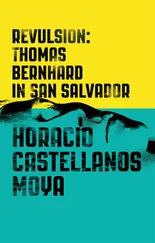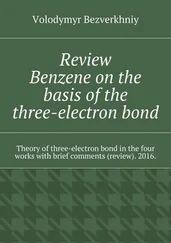Thomas Bernhard - The Lime Works
Здесь есть возможность читать онлайн «Thomas Bernhard - The Lime Works» весь текст электронной книги совершенно бесплатно (целиком полную версию без сокращений). В некоторых случаях можно слушать аудио, скачать через торрент в формате fb2 и присутствует краткое содержание. Жанр: Современная проза, на английском языке. Описание произведения, (предисловие) а так же отзывы посетителей доступны на портале библиотеки ЛибКат.
- Название:The Lime Works
- Автор:
- Жанр:
- Год:неизвестен
- ISBN:нет данных
- Рейтинг книги:4 / 5. Голосов: 1
-
Избранное:Добавить в избранное
- Отзывы:
-
Ваша оценка:
- 80
- 1
- 2
- 3
- 4
- 5
The Lime Works: краткое содержание, описание и аннотация
Предлагаем к чтению аннотацию, описание, краткое содержание или предисловие (зависит от того, что написал сам автор книги «The Lime Works»). Если вы не нашли необходимую информацию о книге — напишите в комментариях, мы постараемся отыскать её.
. As the story begins, he’s just blown the head off his wife with the Mannlicher carbine she kept strapped to her wheelchair. The murder and the bizarre life that led to it are the subject of a mass of hearsay related by an unnamed life-insurance salesman in a narrative as mazy, byzantine, and mysterious as the lime works — Konrad’s sanctuary and tomb.
The Lime Works — читать онлайн бесплатно полную книгу (весь текст) целиком
Ниже представлен текст книги, разбитый по страницам. Система сохранения места последней прочитанной страницы, позволяет с удобством читать онлайн бесплатно книгу «The Lime Works», без необходимости каждый раз заново искать на чём Вы остановились. Поставьте закладку, и сможете в любой момент перейти на страницу, на которой закончили чтение.
Интервал:
Закладка:
… at Laska’s they say that Konrad had tried at first to drag the corpse out to the upstairs vestibule, which has a window overlooking the water; like every man who has just killed someone, Konrad thought, says Wieser, that he could get rid of the victim, and the first thing that naturally occurred to him was to drag the body to that window and then, after weighting it with some good-sized object of iron or stone, as Fro thinks, simply drop it out the window where there happened to be, right under the sill, two marble blocks intended as door posts but left unused by Hoerhager, Konrad’s cousin and the former owner of the lime works, who had decided to use tuffstone instead; Fro feels sure that those two marble blocks will play a part in the course of the trial. Anyway Konrad soon realized that he could not drag the body to the window overlooking the water, because he simply did not have the strength, besides which it may have dawned on him that it would not make sense to throw the body into the water that way, because even a medium-bright flatfoot would soon have seen through so clumsy a way to dispose of the victim, as Wieser says; malefactors always began by thinking up the craziest ways to cover their tracks, and what could have been crazier in this case than to toss the Konrad woman out the window. So when Konrad had dragged her about midway he gave up the idea, possibly he decided at that point not to get rid of the body at all is Fro’s guess, but in any case he dragged it right back, the blood pouring from it harder all the time, dragged it all the way back to her room and somehow he mustered the strength to prop her up in her chair again, as the police reconstructed what happened; they say Konrad admitted that his dead wife kept slipping through his arms to the wooden floor as he tried to get her back into the chair, it took him over an hour to get the heavy, lifeless woman’s body that kept slipping down on him back into that chair. When he finally made it he was so exhausted that he broke down beside the chair …
… immediately after the murder, he is alleged to have told them, he began to run around inside the lime works as if he had gone completely crazy, he ran around from top to bottom and back again, and it was when he finally stopped to lean on the window seat overlooking the water in the upstairs vestibule, that it occurred to him to throw the dead woman out that window into the water. In fact there were blood tracks throughout the lime works that show exactly where and how Konrad ran all over the place, his statements, easy enough to check, were true, and Fro believes that Konrad had no reason not to tell the truth, actually it was characteristic of Konrad to be a fanatic about telling the truth, and still is. At The Inglenook they were saying that Konrad shot the woman in cold blood from behind, made sure she was dead, and then instantly went to give himself up. At Laska’s the word was that the woman’s head was shattered by a bullet fired into her left temple. When they’re discussing which temple it was, some keep saying it was the left temple and others that it was the right temple. At Lanner’s there were some who said that Konrad had killed his wife with an ax and then shot her with the carbine only after she was already dead, plain evidence of insanity. At Laska’s they said that Konrad held the muzzle of the gun to the back of his wife’s head and did not pull the trigger for a minute or two, so she knew when she felt the gun at her head that he was going to do her in this time, but made no move to defend herself. Probably he shot her at her own request, they say at the Stiegler, her life was hell and getting more agonizing every day, and it was just as well that the poor soul — which is the way people almost always referred to her everywhere — was out of it. Still, they do say that Konrad should have shot himself after shooting his wife, because all he had to look forward to now was the inescapable horror of prison or else the madhouse for life …
… but a man who kills someone close to him, says Fro, is hardly likely to act in a logical manner afterward …
… the magistrate is supposed to have said to the policemen around him that the woman’s brains on the floor reminded him in texture and color of Emmentaler cheese, says Wieser. Hoeller confirms this statement. About Konrad the magistrate is supposed to have said that he had Schridde’s hair syndrome, a symptom of stomach cancer …
… Konrad had actually kept an ax hidden in his wife’s room for some weeks, a common wood ax, but Hoeller says that Konrad did not kill his wife with the ax, which lay on the window seat behind the invalid chair for weeks gathering dust, but that he shot her with the gun. The time of the killing is supposed to have been three A.M., but other possibilities are being discussed; at Lanner’s they insist that Konrad killed his wife at four A.M., at Laska’s they make it one A.M., at Stiegler’s, five in the morning, at The Inglenook, it’s two A.M. Nobody, not even Hoeller, heard a shot. Even while Konrad himself was still insisting that the lime works at Sicking was the only place in the world where it was possible for him to live and do his scientific work, Wieser says, he had actually come to feel that Sicking threatened him with a kind of doom, increasingly so during the last two years, says Fro; he knew, though he could not admit it, that he felt totally depressed and defeated here, that it was, as Wieser puts it quite pathetically in his way, a tragedy. Konrad had begun a long time ago to move heaven and earth for possession of the lime works, which had always been owned by the Konrad family, but had been parlayed into the hands of Konrad’s nephew, Hoerhager, as Konrad once confided to Fro, by means of all kinds of testamentary chicanery, between the two world wars; the idea of buying the lime works had been Konrad’s dream for three of four decades, though as time went on the dream seemed less likely ever to materialize, said Fro, but then suddenly, or as Wieser says, overnight, it became realizable. Even as a child Konrad had fixed his mind on the idea of settling in the lime works one day, Fro thinks; he had planned to move in and live there ever since he could remember; planned to take possession of the old stonework labyrinth and spend the rest of his life in it, in what he once described to Fro as the total isolation of Sicking, to live intensely to the end as he needed to live, specifically by using his head intensively, his head over which he still had perfect control; but the way his nephew Hoerhager kept raising the price and changing his mind about selling or not selling, one day he would sell and the next day he wouldn’t sell, downright sadistic it was, Konrad felt, the way his nephew would agree to sell the lime works one minute and the next minute he would deny he had ever made such a promise, or else he would threaten Konrad with selling it, but not to Konrad, then again promise to sell it to Konrad only and no one else, all of this continual wanting-to-sell then not wanting-to-sell, the incessant and absolutely unjustified raising of the purchase price (Fro), it nearly destroyed Konrad, but he wouldn’t have been Konrad if he hadn’t, in the end, despite the monstrous obstacles put in his way, succeeded in getting possession and finally moving into the lime works. Though it is certainly true, as Wieser says, that Konrad left no stone unturned for decades to get possession of the lime works, pushing and pursuing his plan more and more ruthlessly until the day he actually realized it, his wife — whom no one ever laid eyes on because of her crippled and paralyzed condition, no one that is except Hoeller, and the baker, the chimney sweep, her hairdresser, the local doctor, and the Stoerschneider woman, and about whom they say that though crippled she was a great beauty — the Konrad woman had made every effort and done all she could to keep from having to move into the lime works; while her husband, as Wieser says, had naturally thought only about his scientific work, for the completion of which the lime works had always seemed to him to be the ideal retreat, she began to dread it even before she started to take his ideas about the lime works seriously, and as he kept bringing these ideas up with a more and more passionate insistence, she would say later on, she became increasingly terrified of what her life, sad as it was already, was bound to turn into there, as her husband’s intention to move into the lime works neared fulfillment, and as we know now, her fears were certainly realized; what she wanted was to go back to Toblach, her home town, and her parents’ house, but going back to Toblach meant to him nothing less than giving up his life’s work, his aim in life, and therefore hers as well; his wife was after all his half sister, and her dependence upon him was absolute, says Wieser, the most absolute imaginable, so moving back to Toblach would have been equivalent to suicide for both of them, willful suicide, because it is in any case deadly to return, in the helpless despair of a final effort to survive, and therefore in a redoubled helplessness and despair, knowing of no other way and knowing that there is no other way, that there can be no other way, it is deadly to return in the end to one’s parents’ house in one’s home town, one’s home land, one’s so-called final refuge. Actually his wife had always thought of Toblach as the ideal refuge, in her mind the idyllic Toblach was incessantly juxtaposed to the terrifying Sicking, which she dreaded. But it was Sicking, of all places, where they both went, says Fro, because the husband’s will prevailed; she had always hated the lime works, she had always done all she could to make him give up the idea, first keeping after Konrad’s nephew Hoerhager not to sell, or at least not to sell the lime works to Konrad, then she tried to bribe the nephew, Fro says she offered him a sum in six figures to sell the lime works to someone other than Konrad, finally she took to threatening him, she would alternately warn him and threaten him and blackmail him, but to no avail, says Fro, it was Konrad who finally prevailed as always and in every instance, Fro says. The five and a half years the Konrads spent in Sicking had convinced Konrad, according to Wieser’s statement, that his decision, his ruthless determination to move into the lime works, away from the world which for decades he had regarded as worthless, offering no attraction whatsoever, a world he had always regarded as anti-historical, a world that was merely marking time, out of which he chose to move into the lime works for the sake of his scientific task, which meant his survival. The place had to be his legally purchased property, not merely a rented home. Hoerhager had of course offered to rent Konrad the place in the normal way, on a twelve-year or even a twenty-four-year lease, but Konrad had always firmly refused the offer, as Wieser says, because to live in a rented lime works would have gone against his grain, and Konrad felt that his decision and his ruthless determination had been the correct decision and the correct ruthlessness. From time to time, Konrad told Fro, the word and the idea
Читать дальшеИнтервал:
Закладка:
Похожие книги на «The Lime Works»
Представляем Вашему вниманию похожие книги на «The Lime Works» списком для выбора. Мы отобрали схожую по названию и смыслу литературу в надежде предоставить читателям больше вариантов отыскать новые, интересные, ещё непрочитанные произведения.
Обсуждение, отзывы о книге «The Lime Works» и просто собственные мнения читателей. Оставьте ваши комментарии, напишите, что Вы думаете о произведении, его смысле или главных героях. Укажите что конкретно понравилось, а что нет, и почему Вы так считаете.












